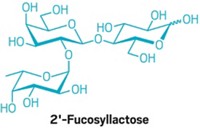Advertisement
Grab your lab coat. Let's get started
Welcome!
Welcome!
Create an account below to get 6 C&EN articles per month, receive newsletters and more - all free.
It seems this is your first time logging in online. Please enter the following information to continue.
As an ACS member you automatically get access to this site. All we need is few more details to create your reading experience.
Not you? Sign in with a different account.
Not you? Sign in with a different account.
ERROR 1
ERROR 1
ERROR 2
ERROR 2
ERROR 2
ERROR 2
ERROR 2
Password and Confirm password must match.
If you have an ACS member number, please enter it here so we can link this account to your membership. (optional)
ERROR 2
ACS values your privacy. By submitting your information, you are gaining access to C&EN and subscribing to our weekly newsletter. We use the information you provide to make your reading experience better, and we will never sell your data to third party members.
Gene Editing
Engineered plants make human milk compounds
Infant formula doesn’t fully replicate human milk. Scientists are turning to genetic engineering to get closer
by Max Barnhart
June 17, 2024

Over 200 different carbohydrates in human milk help form a composition of nutrients suited for the express purpose of feeding a growing child. Yet roughly 75% of infants around the world don’t get their nutrition solely from human milk. Many get part or all of their nutrition from infant formula, which may contain only one or two of those important carbohydrates, if any. Now researchers publishing in Nature Food describe how plants can be modified to produce a diverse array of human milk oligosaccharides (HMOs) (2024, DOI: 10.1038/s43016-024-00996-x).
Other methods for producing HMOs, including microbial fermentation, have existed for years. But according to Collin Barnum, a synthetic biologist formerly at the University of California, Davis, and lead author of the paper, microbes are “only able to produce a small subset of HMOs [that is limited to] these kind of smaller, less complex HMOs.” That’s where plant production can help. Plants possess highly advanced biological pathways for producing carbohydrates via photosynthesis, which the researchers adapted to synthesize 11 different HMOs, including complex fucosylated HMOs that are difficult to make by other means.
That impresses Steven Townsend, an oligosaccharide chemist at Vanderbilt University who wasn’t involved in the research. He says better production methods for those HMOs was needed and current manufacturing can’t “match the scale nor structural diversity of plant engineering or microbial fermentation.”
But much development is required before plant-produced HMOs could become commercially viable. The steps include “optimization of yields, a validated extraction platform, and [regulatory approval] for growing genetically modified plants,” Barnum says. Townsend adds that more research is needed to understand how supplementation with these compounds will improve infant nutrition. “Whether or not these additives are as effective as the personalized product Mom provides is to be determined,” he says.





Join the conversation
Contact the reporter
Submit a Letter to the Editor for publication
Engage with us on Twitter